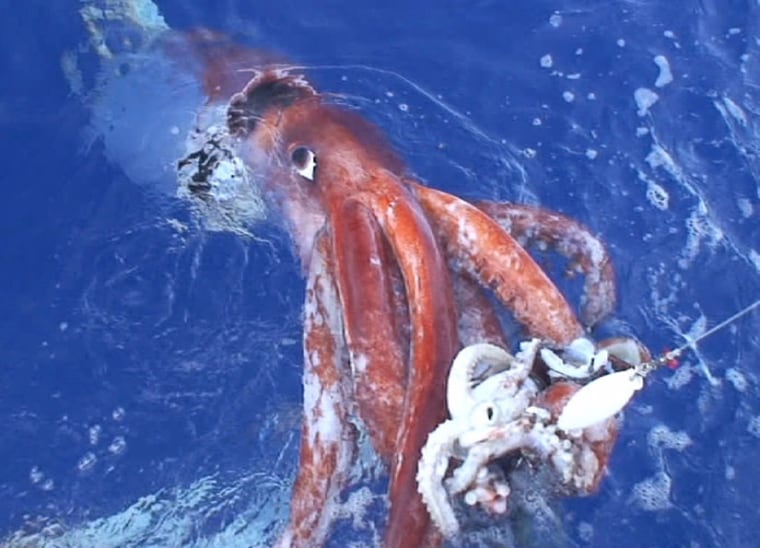The search for the world's last great sea monster is on. But given the reclusive nature of giant squid, the question is exactly how can the deep-sea leviathans be filmed in action up to 3,000 feet below the ocean's surface?
Giant squid can reach up to 60 feet in length. The carnivores have eyes as large as a human head. Until recently, what little was known about them came from dead specimens that washed ashore or got snagged in fishing nets.
It wasn't until December 2006 that zoologist Tsunemi Kubodera of Japan's National Science Museum recorded the first video of a live giant squid.
But mere glimpses of the giant squid won't suffice for an ambitious new project, spearheaded by the Discovery Channel, the Science Channel and the Japanese production firm NHK Enterprises. The aim is to create a two-part documentary featuring the giant squid (Architeuthis dux).
Veteran filmmaker Mike deGruy was one of a group of experts that gathered at Discovery recently to brainstorm about how to film the creature in its habitat.
"You're dealing with an animal that while it is large, it's in an environment that's far larger," he said. "It's not like a piece of coral that's on the ground and all you have to do is find it. It's moving constantly."
Thanks to Kubodera's research, Japan's Ogasawara Islands will likely be the prime location to start the search. Local fishermen are known to catch giant squid in the region, and it's also prime habitat for the sperm whale, the giant squid's main predator.
Finding the animal is step one. Learning its behavior and finding a way to film it come next.
NHK Executive Producer Hiromichi Iwasaki has a variety of techniques planned for filming Architeuthis, including a modified critter camera that could be suctioned onto a sperm whale's back.
Roger Hanlon, of Woods Hole Oceanographic Institution, and Clyde Roper, zoologist emeritus of the Smithsonian Institution, have provided key information on the animals' behavior and physiology, information that may prove essential in finding them.
"You have to be a little bit quiet, you have to be patient, and if you can bring the animal in with a visual trick that might imitate the animal looking for its bioluminescence food item, then you might actually getArchiteuthis close enough to a submersible or an instrument that can film its natural behavior," Hanlon said.
Edith Widder, co-founder and president of Ocean Research & Conservation Association, has pioneered deep-sea observation techniques, building a battery-powered stationary submersible that helped her discover a vast array of previously undocumented sea life.
"But still, we're very limited because (the machines) we go and explore with make loud noises and bright light. And these animals have evolved to be very sensitive to that," Widder said.
Why make all this effort to film an animal that's so difficult to find?
"The giant squid is one of the last, unexamined, quasi-mythical beasts of the world," James Barrat, the documentary's producer, told Discovery News. "He's part of the very human quest to understand things we don't know and things that we're frightened of."
